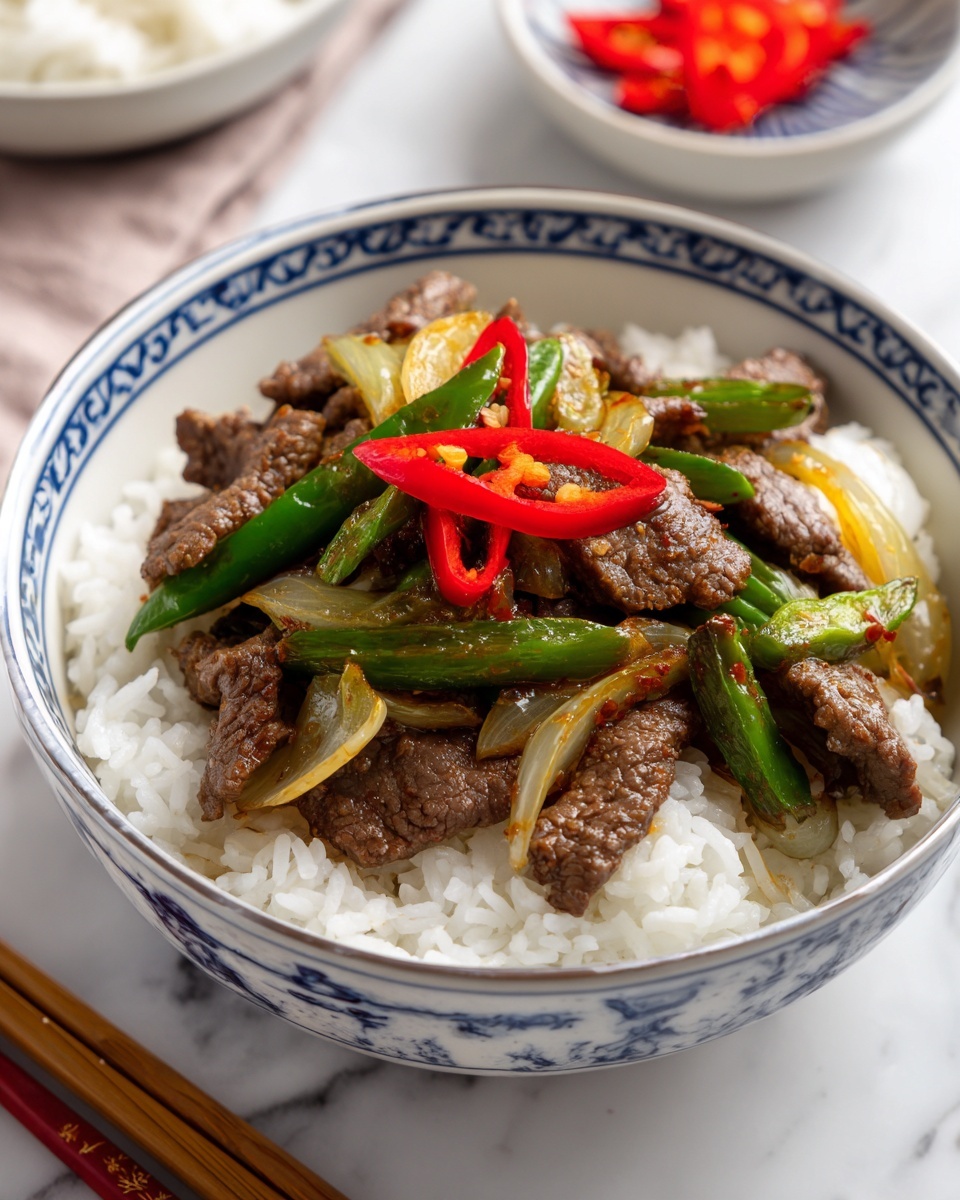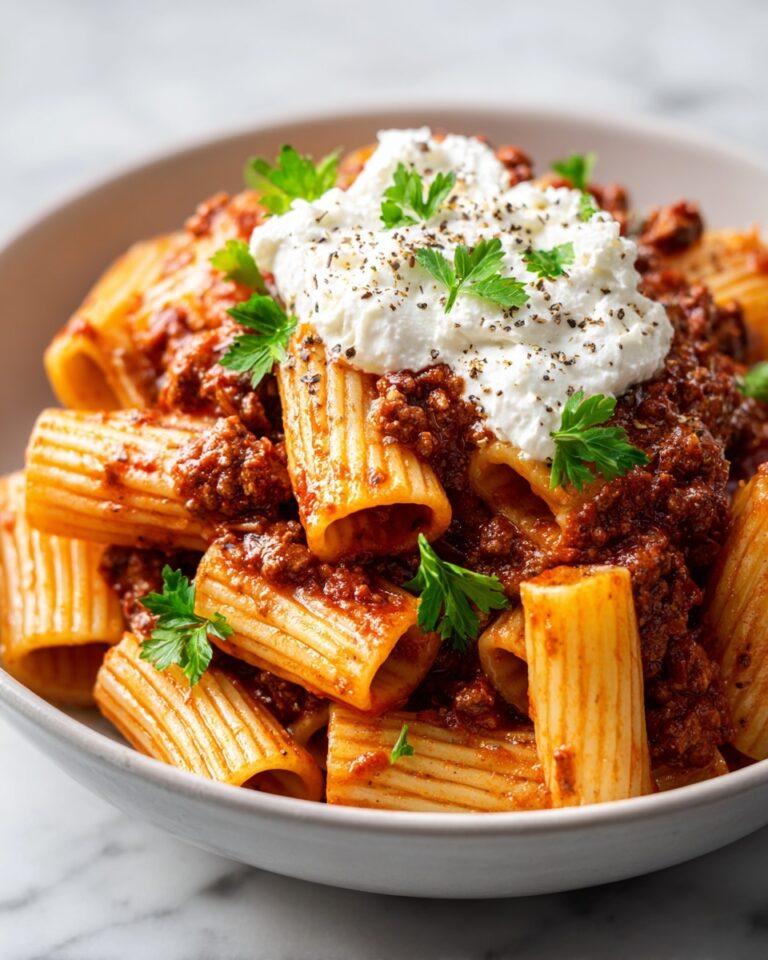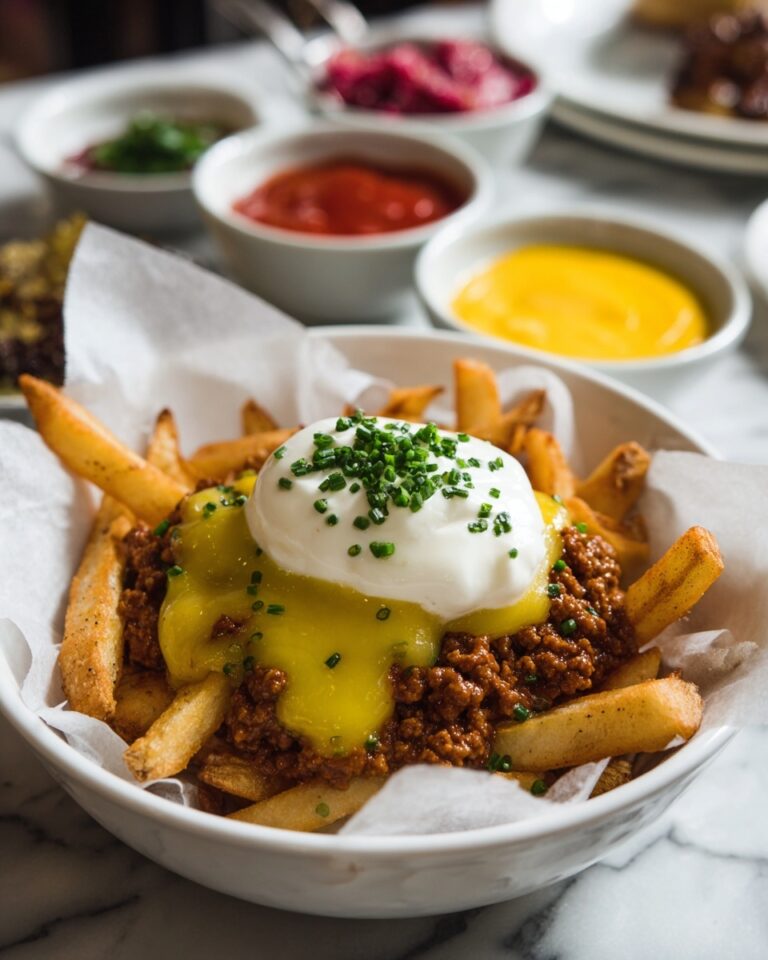If you have a craving for something hearty, comforting, and packed with umami goodness, this Gyudon (Japanese Beef Rice Bowl) Recipe is an absolute must-try. It’s a beloved Japanese classic that brings tender, savory-sweet beef and silky onions together over fluffy, perfectly cooked rice—a combination so satisfying, it feels like a warm hug from the inside. Whether you’re new to Japanese cuisine or looking for a quick weeknight dinner that doesn’t skimp on flavor, this Gyudon recipe delivers in every bite with its rich sauce and tender beef that melts in your mouth.
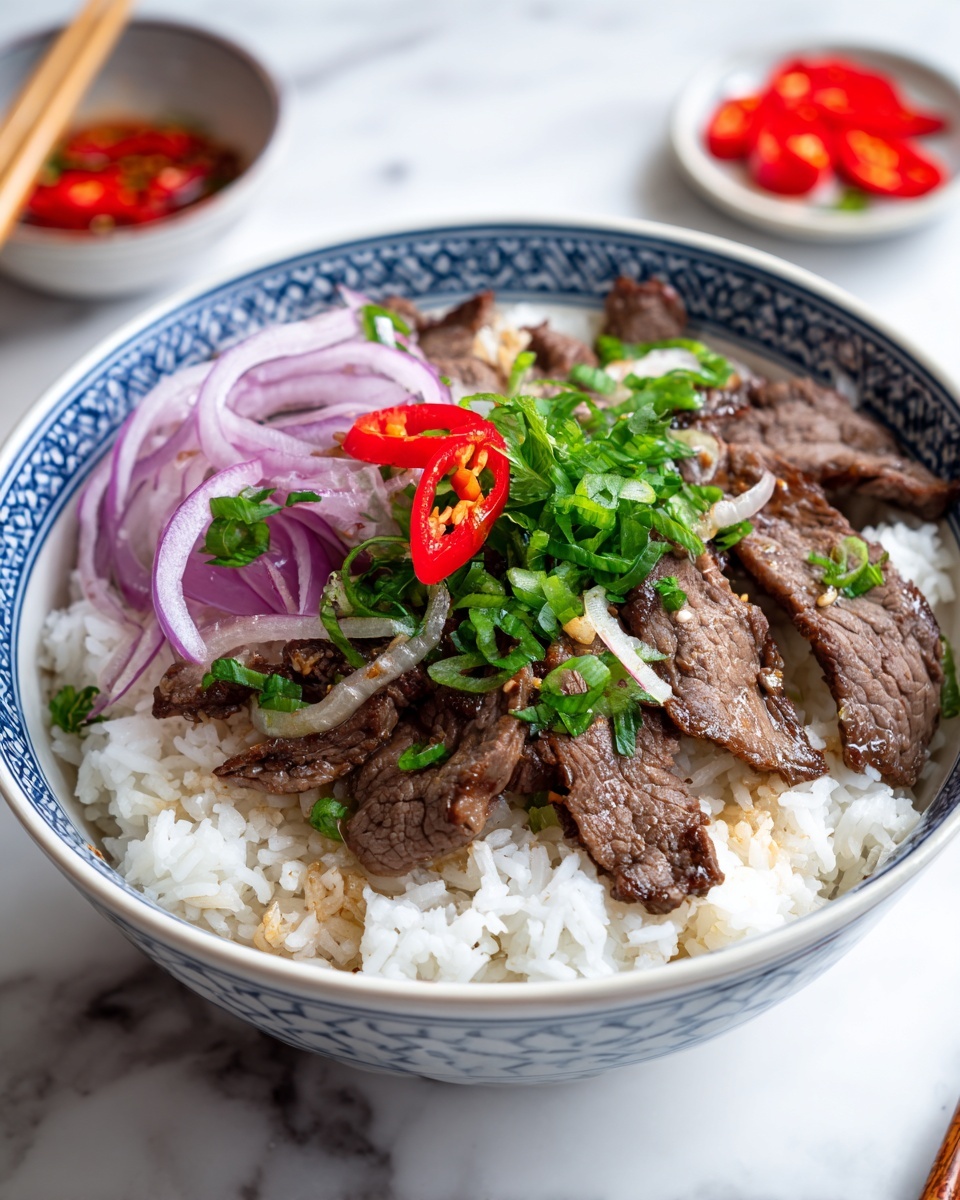
Ingredients You’ll Need
This Gyudon (Japanese Beef Rice Bowl) Recipe relies on a handful of simple yet essential ingredients. Each one plays a crucial role in balancing flavors, creating the soft texture of the beef, or adding color and freshness to the dish.
- ½ onion (4 oz, 113 g), thinly sliced: Adds sweetness and texture that perfectly complements the beef.
- 1 green onion/scallion, diagonally sliced: Provides a pop of color and a mild sharpness.
- ½ lb thinly sliced beef (such as ribeye), cut into 3-inch wide pieces: The star ingredient, tender and flavorful beef makes the dish special.
- ½ cup dashi (Japanese soup stock): Imparts a deep umami base and authentic Japanese flavor.
- 2 Tbsp sake (or dry sherry, Chinese rice wine, or water): Enhances aroma and balances the soy sauce’s saltiness.
- 2 Tbsp mirin (or 2 Tbsp sake/water + 2 tsp sugar): Adds gentle sweetness and a glossy finish to the sauce.
- 3 Tbsp soy sauce: Brings savory depth and a rich color to the dish.
- 1 Tbsp sugar (adjust to taste): Rounds out the flavors by adding a subtle sweetness.
- 2 servings cooked Japanese short-grain rice: The fluffy, slightly sticky rice is the perfect canvas to soak up the flavorful sauce.
- Pickled red ginger (beni shoga or kizami beni shoga) for garnish: Adds a refreshing tangy kick that cuts through the richness.
How to Make Gyudon (Japanese Beef Rice Bowl) Recipe
Step 1: Prepare Ingredients
Start by thinly slicing half an onion to ensure it will soften and sweeten beautifully as it cooks. Diagonally slice the green onion for later garnish—it adds brightness and freshness. To get perfectly tender slices of beef, slightly freeze it for about 15 minutes to firm up, then cut into 3-inch wide pieces. This makes handling and slicing much easier.
Step 2: Make Sauce Base
In a large frying pan, but off the heat, combine ½ cup dashi, 2 tablespoons sake, 2 tablespoons mirin, 3 tablespoons soy sauce, and 1 tablespoon sugar. Stir the mixture thoroughly until the sugar dissolves. The magic here is creating a balanced sauce that will infuse the beef and onions with rich, deep layers of sweet and savory flavor.
Step 3: Add Vegetables and Beef
Spread the thinly sliced onions evenly in the sauce to create separate layers. This helps them cook evenly and soak up all that delicious sauce. Next, arrange the sliced beef evenly on top, making sure to separate the pieces so the sauce can get in between. This ensures every bite is tender and juicy.
Step 4: Simmer
Cover the pan and place over medium heat. Once it starts simmering, reduce the heat to low and keep it covered for 3 to 4 minutes. This gentle cooking melts the flavors together and cooks the beef to tender perfection. Keep an eye on the surface; occasionally skim off any excess fat or foam with a fine-mesh skimmer for a clean-tasting broth.
Step 5: Add Green Onions and Finish Cooking
Sprinkle the diagonally sliced green onions over the simmering beef and onions. Cover once more and cook for an additional minute to let the green onions soften and release their aroma. For an extra touch of richness, you can add beaten eggs at this stage and let them cook gently in the sauce.
Step 6: Serve
Dish out two servings of perfectly cooked Japanese short-grain rice into donburi bowls. Drizzle some of the flavored pan sauce onto the rice, then top it generously with the hot beef and onion mixture. For an authentic finish, drizzle more sauce on top and garnish with pickled red ginger to add a tangy contrast that brightens every bite.
How to Serve Gyudon (Japanese Beef Rice Bowl) Recipe
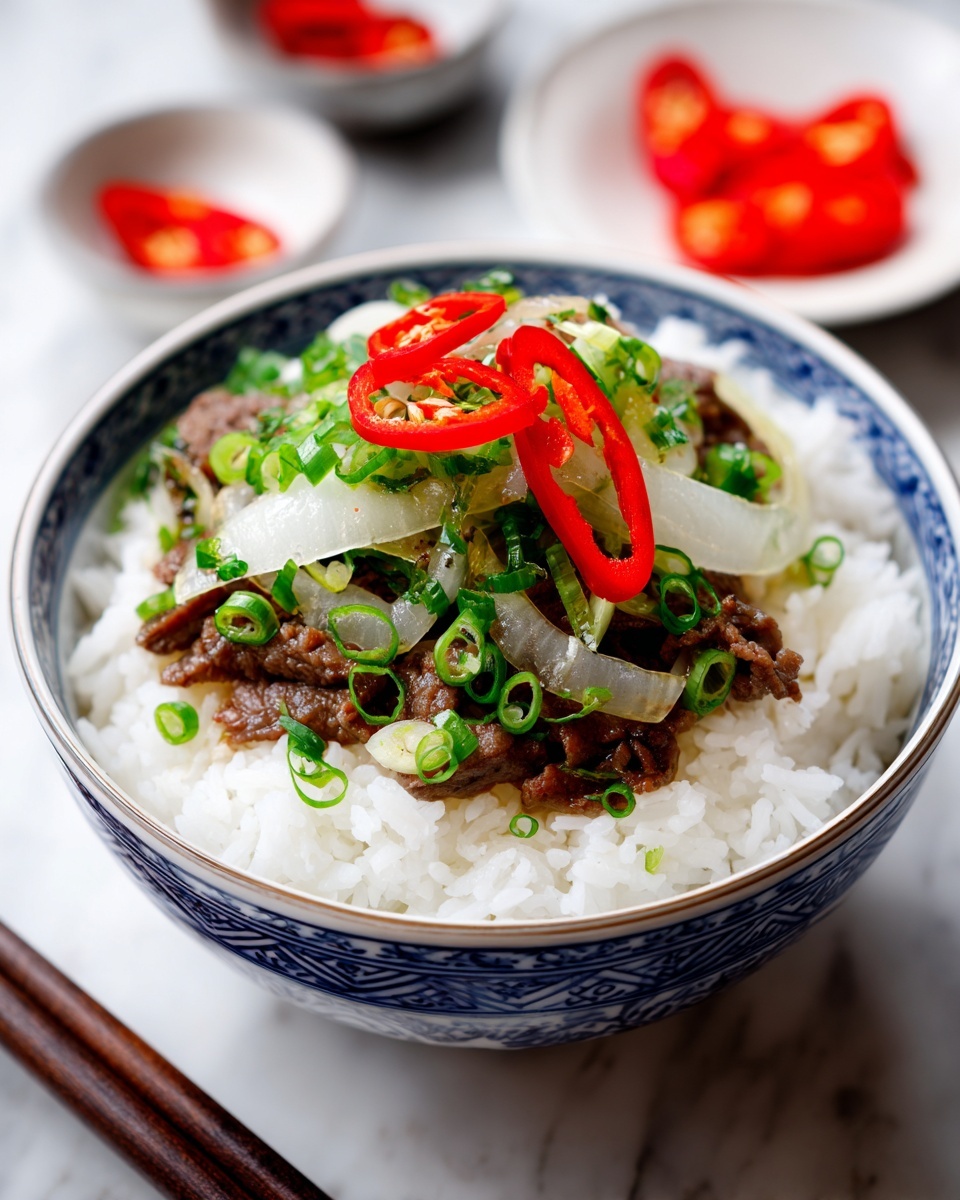
Garnishes
The classic garnish for Gyudon is bright, tangy pickled red ginger, which cuts through the richness of the beef and adds a refreshing note that wakes up your palate. You can also add a raw or soft poached egg on top for a luscious, creamy texture that blends beautifully with the sauce.
Side Dishes
To keep things simple and balanced, serve your Gyudon with a light miso soup and a small bowl of steamed vegetables or a crisp cucumber salad. These sides complement the savory bowl without overpowering its delicate flavors.
Creative Ways to Present
For a fun twist, try serving Gyudon in mini donburi bowls for a party or appetizer-style presentation. You can also jazz it up with a sprinkle of toasted sesame seeds or chopped shiso leaves to add some extra texture and a hint of herby freshness. Experimenting with presentation makes enjoying this classic dish even more exciting.
Make Ahead and Storage
Storing Leftovers
Store any leftover Gyudon in an airtight container in the refrigerator for 2 to 3 days. Typically, the beef will maintain its tender texture, and the sauce remains delicious, making it perfect for a quick meal the next day.
Freezing
You can also freeze portions of Gyudon for longer storage, up to 3 to 4 weeks. Just make sure to cool the dish completely before freezing, and use freezer-safe containers to preserve its flavor and texture best.
Reheating
When reheating, warm the Gyudon gently in a pan over low heat or in the microwave, stirring occasionally to evenly heat the beef and sauce. Adding a splash of water or dashi can help loosen the sauce and keep everything moist without drying out the beef.
FAQs
Can I use a different cut of beef for this Gyudon recipe?
Absolutely! While ribeye is ideal for its tenderness and marbling, you can also use sirloin or brisket. Just make sure to slice the beef very thinly to ensure it cooks quickly and stays tender.
What can I substitute if I don’t have dashi?
If dashi is hard to find, you can use a mild chicken or vegetable broth as a substitute, though it won’t have quite the same umami quality. Adding a splash of soy sauce will help boost that savory depth.
Is there a vegetarian version of Gyudon?
Yes, you can swap the beef for thinly sliced mushrooms or tofu, and use vegan dashi to keep the rich flavor base. The cooking method remains the same, giving you a delicious plant-based Gyudon experience.
Why are Japanese short-grain rice recommended for Gyudon?
Japanese short-grain rice is sticky and slightly sweet, which pairs perfectly with the savory sauce and tender beef. Its texture helps the sauce cling to each grain, creating a harmonious bite.
Can I add other vegetables to the Gyudon?
While the traditional Gyudon sticks to beef and onions, you can add vegetables like mushrooms or shredded carrots if you want to add variety. Just be sure they cook through during the simmering process without overpowering the main flavors.
Final Thoughts
This Gyudon (Japanese Beef Rice Bowl) Recipe is such a fantastic dish to have in your cooking repertoire—quick, flavorful, and irresistibly comforting. Once you make it, you’ll find it hard to resist going back for seconds, and the best part is it comes together with just a handful of ingredients. So grab your beef and dashi, and dive into this authentic taste of Japan that’s perfect any day of the week!
Print
Gyudon (Japanese Beef Rice Bowl) Recipe
- Prep Time: 8 minutes
- Cook Time: 12 minutes
- Total Time: 20 minutes
- Yield: 2 servings
- Category: Main Course
- Method: Stovetop
- Cuisine: Japanese
Description
Gyudon, or Japanese Beef Rice Bowl, is a flavorful and comforting dish featuring thinly sliced beef simmered with onions in a savory-sweet dashi-based sauce. Served over steaming Japanese short-grain rice and garnished with pickled red ginger, this quick and easy recipe captures the essence of traditional Japanese home cooking in just 20 minutes.
Ingredients
Beef and Vegetables
- ½ onion (4 oz, 113 g), thinly sliced
- 1 green onion/scallion, diagonally sliced
- ½ lb thinly sliced beef (such as ribeye), cut into 3-inch wide pieces
Sauce
- ½ cup dashi (Japanese soup stock; use Awase Dashi, dashi packet or powder, or Vegan Dashi)
- 2 Tbsp sake (or dry sherry, Chinese rice wine, or water for non-alcohol version)
- 2 Tbsp mirin (or 2 Tbsp sake/water + 2 tsp sugar)
- 3 Tbsp soy sauce
- 1 Tbsp sugar (adjust to taste)
To Serve
- 2 servings cooked Japanese short-grain rice (approximately 1⅔ cups or 250 g per serving)
- Pickled red ginger (beni shoga or kizami beni shoga) for garnish
Instructions
- Prepare Ingredients: Thinly slice half an onion and diagonally slice the green onion. Slightly freeze the beef to firm it up for easier slicing, then cut into 3-inch wide pieces.
- Make Sauce Base: In a large frying pan (off heat), combine ½ cup dashi, 2 Tbsp sake, 2 Tbsp mirin, 3 Tbsp soy sauce, and 1 Tbsp sugar. Stir well until the sugar dissolves.
- Add Vegetables and Beef: Spread the sliced onions evenly in the sauce to separate the layers. Then distribute the sliced beef evenly on top, separating the slices so the meat covers the onions.
- Simmer: Cover the pan and turn the heat to medium. Once it starts simmering, reduce heat to low and cook covered for 3–4 minutes, allowing the flavors to meld and beef to cook through. Occasionally skim off any scum or fat from the surface using a fine-mesh skimmer.
- Add Green Onions and Finish Cooking: Sprinkle the sliced green onions over the simmering beef and onions. Cover and cook for another minute. Optionally, add beaten eggs at this step for a richer texture.
- Serve: Place two servings of cooked Japanese short-grain rice into donburi bowls. Drizzle some of the pan sauce over the rice, then top with the beef and onion mixture. Optionally drizzle more sauce on top and garnish with pickled red ginger. Enjoy!
- Storage: Store any leftovers in an airtight container in the refrigerator for 2–3 days or freeze for up to 3–4 weeks.
Notes
- Freeze the beef slightly before slicing to make it easier to cut thinly and evenly.
- Adjust the amount of sugar in the sauce according to your preferred sweetness.
- Use dashi powder or packets if you don’t have homemade dashi for convenience.
- You can substitute sake with dry sherry, Chinese rice wine, or water if avoiding alcohol.
- For a richer taste, add beaten eggs just before finishing the cooking process.
- Serve immediately for best texture, as the beef can toughen if overcooked.
- Leftovers can be refrigerated or frozen, but best consumed within a few days for freshness.

